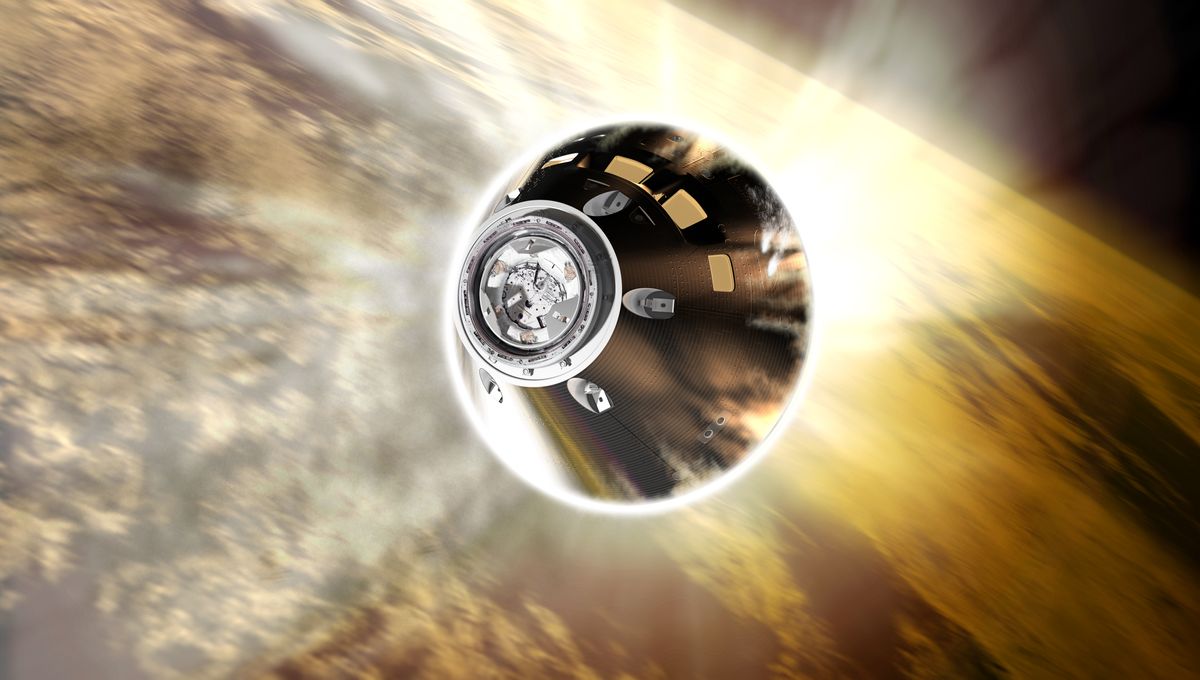
NASA’s Orion is coming back to Earth on Sunday using the skip reentry technique, a way to control where a spacecraft will land by bouncing on the atmosphere. This approach has been planned since the Apollo missions, and while used by robotic craft, has never been attempted with a vehicle designed to carry astronauts.
The approach requires the spacecraft to hit the thicker parts of the atmosphere, then come back up again, before gliding on it until it’s at the right reentry point. It’s called a skip reentry because the spacecraft skips on the atmosphere like a stone on a lake.
“The skip entry will help Orion land closer to the coast of the United States, where recovery crews will be waiting to bring the spacecraft back to land,” Chris Madsen, Orion guidance, navigation and control subsystem manager, said in a statement last year. “When we fly crew in Orion beginning with Artemis II, landing accuracy will really help make sure we can retrieve the crew quickly and reduces the number of resources we will need to have stationed in the Pacific Ocean to assist in recovery.”
Another lunar mission, Chang’e-5, used this technique to land in inner Mongolia, and the Apollo mission, as well as some Soviet ones, used a partial skip to reduce the effects of the atmosphere on the vehicles. Orion will still experience a temperature half as high as that on the surface of the Sun, but by splitting the passage through the atmosphere in two the periods of heating are also split up.
“We extend the range by skipping back up out of the atmosphere where there is little to no drag on the capsule. With little or no drag, we extend the range we fly,” added Madsen. “We use our capsule lift to target how high we skip, and thus how far we skip.”
While this approach has been known for decades, it requires accurate navigational technology and computing powers to be executed correctly – you don’t want to end up bouncing off the atmosphere.
“We took a lot of that Apollo knowledge and put it into the Orion design with the goal of making a more reliable and safer vehicle at lower cost,” said Madsen. “These are some of the things we’re doing that are different and provide more capability than Apollo.”
Orion has now left the lunar sphere of influence and is coming straight back to Earth. It is expected to land on December 11 off the coast of San Diego. A final landing zone will be announced soon by NASA.
Source Link: Orion Will Attempt Reentry Approach Never Used By Spacecraft Designed For Humans